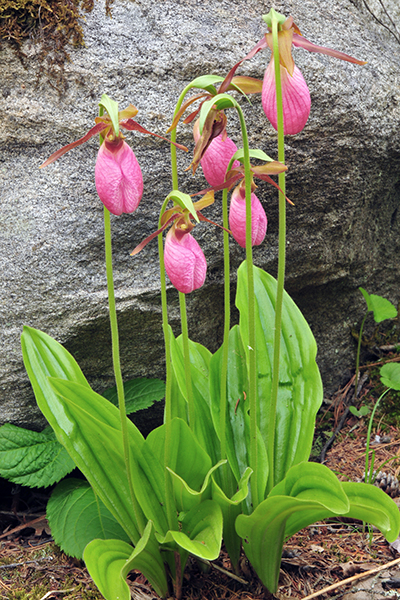Coastal Maine Botanical Gardens is once again teaming up with the University of Maine’s Cooperative Extension and Sea Grant to participate in Signs of the Seasons, a citizen-science program that engages volunteers in observing plant and animal phenology (the study of seasonal cycles and the timing of life events, such as when birds make their nests in the spring, when berries ripen in the summer, when leaves change color in the autumn, etc.). All kinds of creatures (humans included) depend on the predictability of these seasonal cycles.
But as we’re all aware, seasonal cycles seem to be shifting. That’s where we come in—using our backyards as laboratories, participants in the Signs of the Seasons program, by becoming trained to observe and record plants and animals living in our own communities, help scientists document the local effects of global climate change. Through their observations, volunteers create a detailed record of the region’s seasonal turns, a record that’s then made available to collaborating scientists.
As you probably know, farmers, gardeners, fishermen and naturalists have long recorded seasonal observations in their notebooks, logs and ledgers. When combined, those historical records plus modern observations tell scientists that shifts in long-term phenology trends closely match records of the earth’s warming temperature.
 Phenology changes are easy for volunteers of any age to observe and record—after all, we already spend so much time outdoors, noting the first robin of spring, the emergence of the first lady slipper orchid or the first and last trees to lose their leaves in autumn. Those who choose to participate in Signs of the Seasons can follow as many indicator species as they wish, identifying and marking one site—or several—where they’ll observe these species throughout the year.
Phenology changes are easy for volunteers of any age to observe and record—after all, we already spend so much time outdoors, noting the first robin of spring, the emergence of the first lady slipper orchid or the first and last trees to lose their leaves in autumn. Those who choose to participate in Signs of the Seasons can follow as many indicator species as they wish, identifying and marking one site—or several—where they’ll observe these species throughout the year.
Observations might include sightings of migrating birds, nesting activity, plumage appearance or the flowering and leafing of plants or changing foliage in autumn. As more observations are recorded, the difference between short-term variability and long-term trends becomes clearer. This is invaluable information—it’s simply not possible for scientists alone to gather the vast amount of data needed to monitor these trends as they’re happening. We are the ones who know our local plant and animal communities best. In fact, volunteer phenology monitors are very likely to be the first to notice important changes as they happen.
Sound like a project you’re interested in? Join us Monday, April 29 from 12:30 – 3:30 at CMBG’s Bosarge Family Education Center. For more information about the program and to register, visit UMaine’s Cooperative Extension. Questions about this volunteer opportunity may be directed to Elisabeth Maxwell at elisabeth.maxwell@maine.edu.